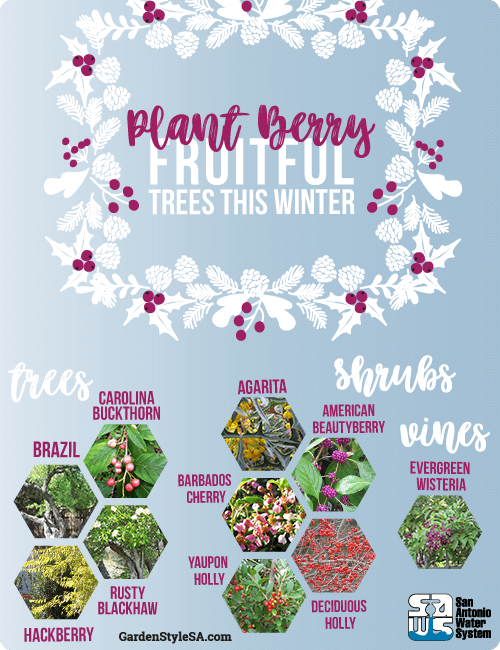Trees and shrubs that produce small fruit are extremely important to our feathered and furry friends during the winter. But they are also very appealing to the eye. For both reasons, let’s plant some fruit-bearing plants.

Here are several options:
Trees
Brazil
A small single or multi-trunk tree that produces bluish black fruit in late summer.
Carolina buckthorn
A small native tree that produces black fruit with multiple seeds in early fall.
Hackberry
A large tree that produces red to black fruit late summer to late fall, and one of the best trees for wildlife.
Rusty blackhaw
A small single or multi-trunk tree that produces a cluster of dark blue fruit.
Mexican plum
A medium size tree that produces white flowers in the spring and golf ball sized fruit in early fall.
Shrubs
Agarita
A small evergreen shrub that produces yellow flowers and red fruit late summer.
American beautyberry
A small deciduous shrub that produces bright purple fruit late summer.
Barbados cherry
A small, low-growing shrub that produces red fruit in early fall that is extremely high in vitamin C.
Deciduous holly
A small multi-trunk tree or shrub that is male and female. Only the female produces scarlet fruit in late fall.
Yaupon holly
A small multi-trunk evergreen tree or shrub that also comes in male and female.
Vines
Evergreen wisteria
Unfortunately is not always evergreen in San Antonio, but does produce richly colored purple fruit in late summer to late fall.
Adding fruit producing trees, shrubs and vines to your landscape appeals both to wildlife and your eye.


